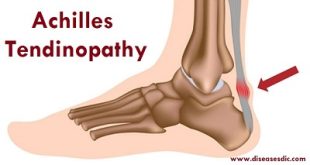Description
Anaplasmosis is a disease caused by the bacterium Anaplasma phagocytophilum. These bacteria are spread to people by tick bites primarily from the blacklegged tick (Ixodes scapularis) and the western blacklegged tick (Ixodes pacificus). People with anaplasmosis will often have fever, headache, chills, and muscle aches. Doxycycline is the drug of choice for adults and children of all ages with anaplasmosis.
Pathogenesis
Anaplasma phagocytophilum is an obligate intracellular bacterium which primarily attacks neutrophil granulocytes but also eosinophils of different species, including dog, cat, cattle, sheep, goat, horse, deer, rodents and birds. Monocytes and lymphocytes act as secondary host cells.
The elementary body is the infective stage and enters the host cell by phagocytosis. Elementary bodies are individual bacteriae about 1 µm in diameter and usually coccoid or ellipsoid in shape. Once they are captured inside the phagosomes, the pathogens replicate by binary fission, forming clusters of tightly packed elementary bodies termed initial bodies. Additional growth and replication lead to the formation of microcolonies, so called morulae, the configuration that typifies the genus. Apoptosis of the host cell causes a dissolving of the morulae so that the bacteria are released to the blood and are able to infect new cells. Furthermore bacteria can also be released by exocytosis too.
Anaplasma phagocytophilum infection is associated most commonly with the development of mild to moderate thrombocytopenia, also other cytopenias may occur, including neutropenia, lymphopenia, and mild anaemia.
Causes
Tick bites
Anaplasma phagocytophilum is the causative organism of anaplasmosis. The causative organism is carried by ticks, the bite of the carrier tick causes anaplasmosis. Anaplasma phagocytophilum has the following two carriers:
- Deer tick
- Western black-legged tick
Blood transfusion
In rare cases, A. phagocytophilum has been spread by blood transfusion.
Risk factors
Ticks live near the ground in wooded or brushy areas. They do not fly or jump, so they can only reach a host who brushes up against them. Factors that increase your risk of a tick bite include:
- Being outdoors in warm spring and summer months
- Participating in activities in wooded areas, such as camping, hiking or hunting
- Wearing clothes that leave your skin exposed in tick-friendly habitat
Signs and symptoms
The signs and symptoms of anaplasmosis may include:
- Fever
- Severe headache
- Muscle aches
- Chills and shaking
- Less frequent symptoms of anaplasmosis include nausea, vomiting, loss of appetite, weight loss, abdominal pain, cough, diarrhea, aching joints and change in mental status.
- Although people of any age can get anaplasmosis, it tends to be most severe in the aging or immune-compromised. Severe complications can include respiratory failure, renal failure and secondary infections.
What are possible complications of anaplasmosis?
In rare cases, anaplasmosis can cause serious complications such as:
- Brain problems such as confusion, seizures, or coma
- Excess bleeding (hemorrhage)
- Heart failure
- Breathing (respiratory) failure
- Kidney failure
- Septic shock
These complications are rare in the vast majority of otherwise healthy people. But they are more common in those who have weak immune systems. This includes people who have HIV/AIDS, cancer, or organ transplants. They may need additional treatments, such as fluids, breathing support, or kidney dialysis. In a small number of people, these complications can lead to death.
How is anaplasmosis diagnosed?
Your healthcare provider will perform a physical exam, and ask about your health history and your symptoms. Tell him or her if you know you had a recent tick bite or any outdoor exposure in areas of the country where these ticks are common.
Your healthcare provider will need results from certain tests to diagnose the condition. These may include the following blood tests:
- Examination of your white blood cells under a microscope. The bacteria can often be seen inside these white blood cells.
- Polymerase chain reaction (PCR). This is a newer method to multiply pieces of the bacteria and detect them chemically. It is more sensitive than looking through a microscope but is not yet widely available.
- Antibody test. This often does not become positive until many days or a few weeks after the infection. It is usually not helpful while you are first sick.
Anaplasmosis is often hard to diagnose. You may have only very mild symptoms that could be caused by many other diseases. Some people with this disease may not know that a tick bit them. You may be referred to an infectious disease specialist for diagnosis.
How is Anaplasmosis Treated?
Treatment should be started even if the diagnosis of anaplasmosis is suspected clinically, as delay in treatment may aggravate the severity of the condition. The following treatment approach is followed in treating anaplasmosis.
Antibiotic Therapy
Anaplasma phagocytophilum is resistant to antibiotics such as penicillins, cephalosporins, macrolides, aminoglycosides, and quinolones. However, patients with anaplasmosis respond well to tetracyclines (especially doxycycline). In patients treated with tetracycline antibiotics, relapse has never been reported.
The dosage of doxycycline:
- Adults: 100 mg, every 12 hours
- Children under 45 kg: 2 mg/kg body weight, twice a day
If the patient cannot tolerate tetracycline antibiotics or if its use is contraindicated in the patient, then rifampin is prescribed. Chloramphenicol is no longer recommended for treating anaplasmosis.
Usually, doxycycline is not recommended during pregnancy, but it can be used if the anaplasmosis has become a life-threatening condition. Rifampin can also be used with little success.
The fever subsides within 24-72 hours if the patient is treated within the first five days of anaplasmosis. In severe cases, fever might take a long time to subside. Treatment must be continued for at least three days after the fever subsides and until clinical improvement is seen in patients. Even in the absence of a confirmatory report, if clinical response is observed within 48-72 hours, then the treatment must be continued for the recommended period. Standard duration of treatment is 7 to 14 days.
Prevention of anaplasmosis
There are several ways to help prevent anaplasmosis. The best prevention method is to take precautions against coming into contact with ticks.
If someone sustains a tick bite, they should immediately and completely remove it from their body. A tick needs to stay attached for 4–24 hours to transmit the bacteria responsible for anaplasmosis. Removing the tick can prevent transmission.
A person can help prevent tick bites by:
- Walking in the center of trails, rather than near the grassy edges
- Avoiding tall grass or brush
- Applying products containing 0.5% permethrin to clothing, boots, and shoes
- Using insect repellents
- Checking pets and gear for ticks before coming inside
- Inspecting oneself, pets, and children for ticks after spending time in the yard or other outdoor areas
- Taking a shower within a short time of being outside, to better check areas of the body that clothing conceals
- Keeping home yards cut short
- Keeping a barrier of wood chips or rocks between lawns and wooded areas, to prevent ticks from spreading
- Removing leaves and brush from yards
Ticks are active all year round, though more people are likely to come into contact with them during warmer months.
If possible, a person should also take a photo of any removed tick. Having access to a photo can help a doctor diagnose potential illness if symptoms start to occur.
 Diseases Treatments Dictionary This is complete solution to read all diseases treatments Which covers Prevention, Causes, Symptoms, Medical Terms, Drugs, Prescription, Natural Remedies with cures and Treatments. Most of the common diseases were listed in names, split with categories.
Diseases Treatments Dictionary This is complete solution to read all diseases treatments Which covers Prevention, Causes, Symptoms, Medical Terms, Drugs, Prescription, Natural Remedies with cures and Treatments. Most of the common diseases were listed in names, split with categories.







